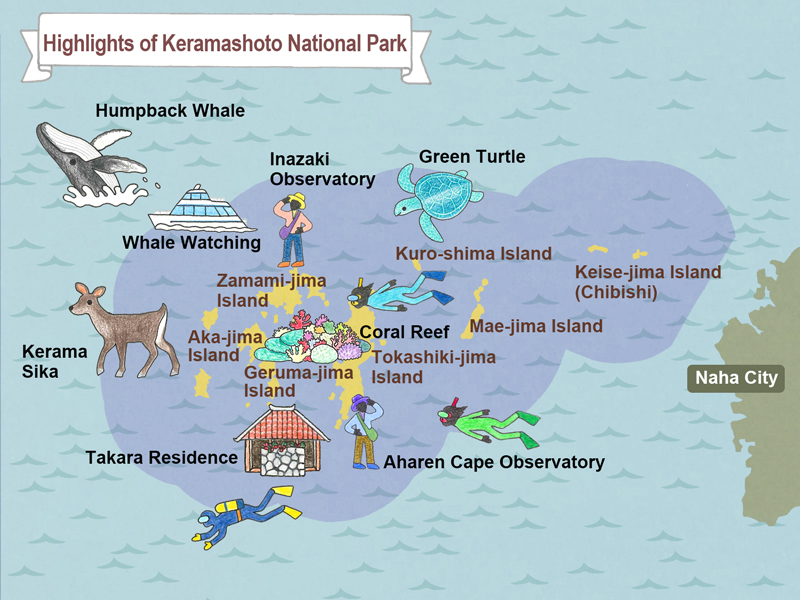- MOE
- National Parks of Japan
- Keramashoto National Park
- Guide of Highlights
main body
Highlights of Keramashoto National Park
Nishibama Beach (Aka-jima Island)
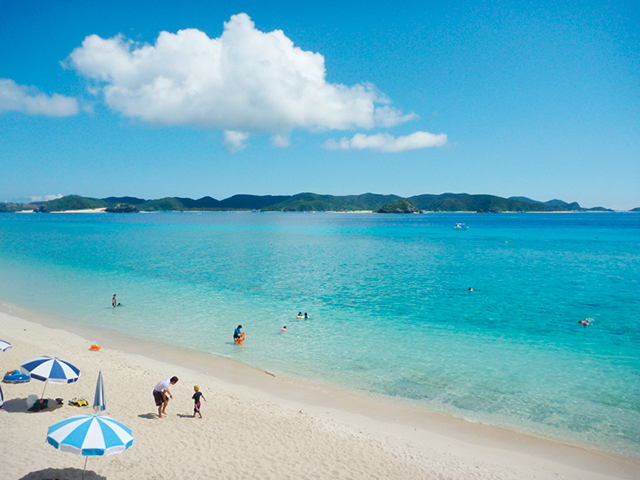
Nishibama Beach (Aka-jima Island)
It is a beautiful beach adorned in the gradational Kerama Blue, where a white sandy beach extends linearly.
Furuzamami Beach (Zamami-jima Island)
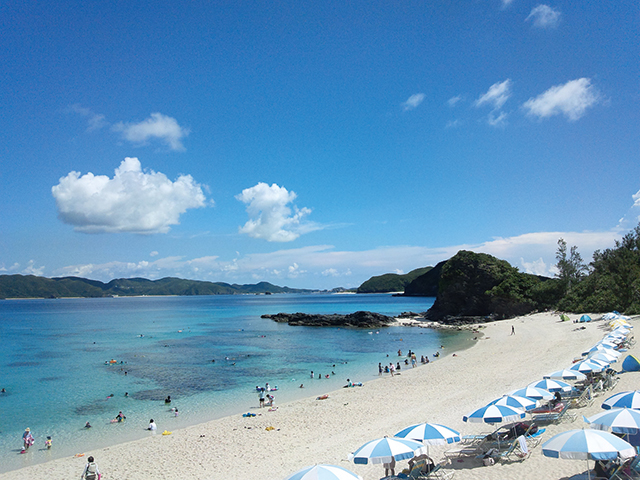
Furuzamami Beach (Zamami-jima Island)
The beach has a nice depth to observe schools of tropical fish swimming around a large coral reef from up close near the edge of the surf. This is now a 2-star beach rated by the Michelin Green Guide.
Inazaki Observatory (Zamami-jima Island)
Inazaki Observatory (Zamami-jima Island)
A park located north of Zamami-jima Island. Agunijima Island, Tonakijima Island, and Kumejima Island can be seen on clear days. Humpback whales frequent the area mostly between December and April, and are most easily observed from here. Also used as a whale watching site.
Aharen Beach (Tokashiki-jima Island)
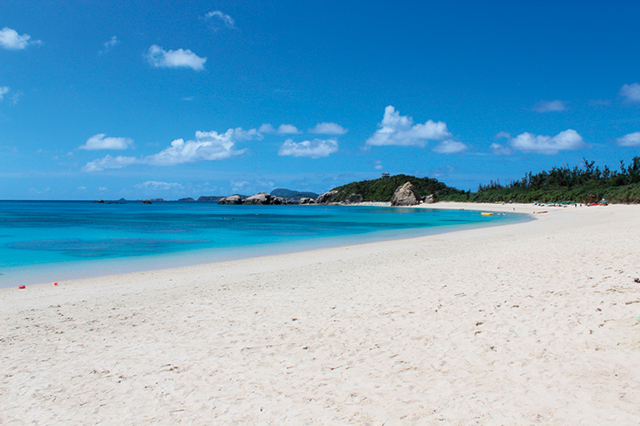
Aharen Beach (Tokashiki-jima Island)
Situated in the southwest of Tokashiki-jima Island, Aharen Beach offers a long sandy beach extending along the bay.
The village adjacent to the beach is Aharen Village where visitors can dine, lodge and enjoy marine activities.
Aharen Cape Observatory (Tokashiki-jima Island)

Aharen Cape Observatory (Tokashiki-jima Island)
A park located at the southern tip of Tokashiki-jima Island. Walking tracks and view points are available. The characteristic scenery of the Kerama Islands, and the massive sandstone cliffs, can be viewed from the walking tracks.
Takara Residence (Geruma-jima Island)

Takara Residence (Geruma-jima Island)
The captain's house (Sendosuya) in the settlement on Geruma-jima Island is thought to have been built in the latter part of the 19th Century. Preserved unaltered as an original, old, Okinawan house. Designated as an Important Cultural Property of the Nation.
Wildlife & Plants
Coral Reef

Coral Reef
The sea around the Kerama Islands is extremely clear, with a variety of table, branch, and horned reef-producing corals growing over a wide area, presenting a beautiful seascape.
Green Turtle (Chelonia mydas mydas)

Green Turtle (Chelonia mydas mydas)
Distributed widely in tropical and sub-tropical zones, the green turtle lays its eggs on the sand beaches of the Kerama Islands.
Kerama Sika

Kerama Sika
In comparison to the Sika deer of Kyushu, this deer has a smaller head and antlers. Kerama sika and its habitat (Yakabi-jima Island, Geruma-jima Island) are designated as a National Natural Monument of the Nation.
Humpback Whale (Megaptera novaeangliae)
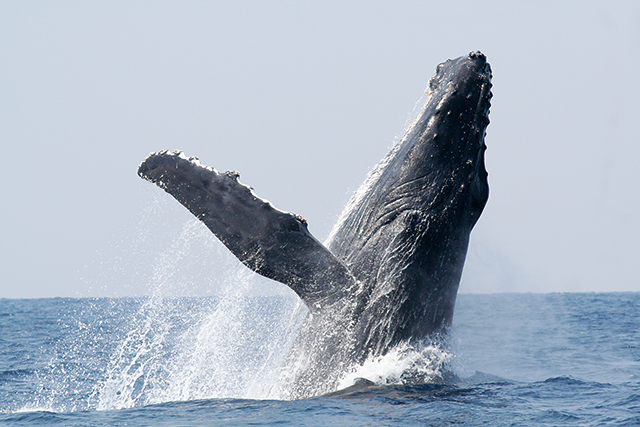
Humpback Whale (Megaptera novaeangliae)
A mammal, 13 - 15 m in length, and weighing 30 tonnes. The main breeding grounds are in the Ogasawara Islands and the Nansei Islands. The humpback whale can be seen in the area around the Kerama Islands between December and April.
Activities
Diving / Snorkeling
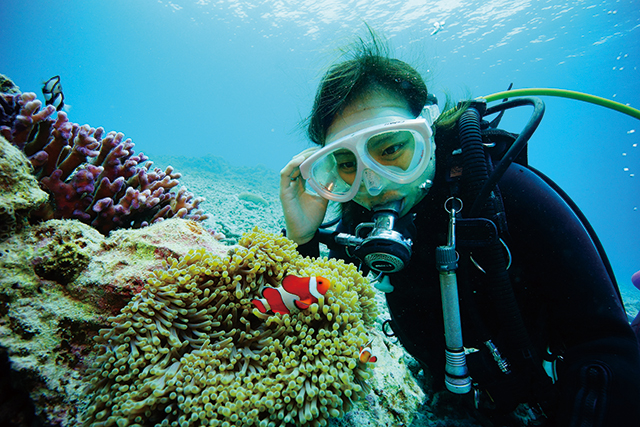
Diving / Snorkeling
The exceptionally transparent waters, known as the Kerama Blue, and coral reefs scattered throughout the shoals, along with other living creatures inhabiting here, can be seen up close.
Sea Kayaking
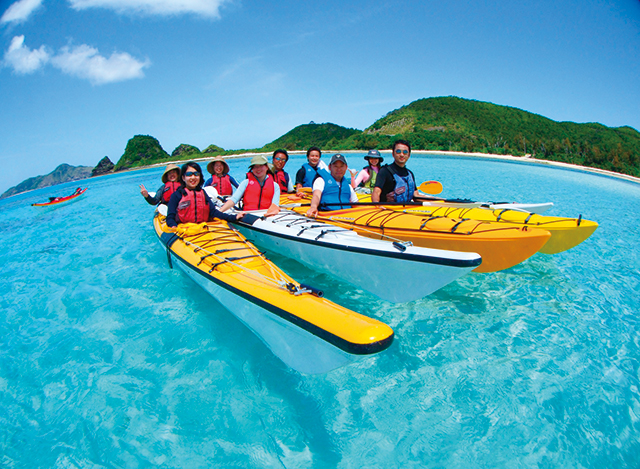
Sea Kayaking
Sea kayaking on the fantastically translucent water is a great way to encounter sea turtles and all kinds of marine wildlife.
Whale Watching
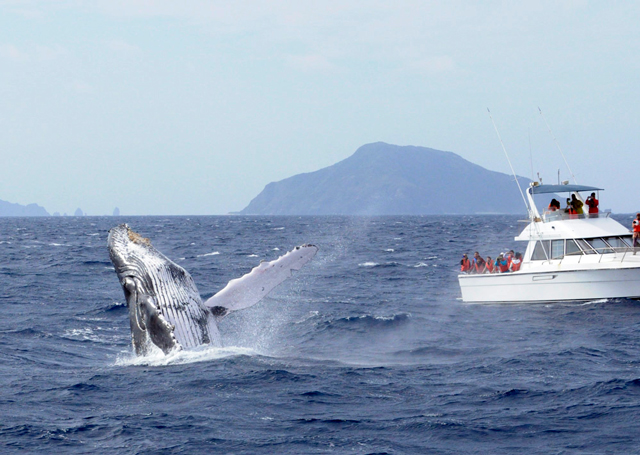
Whale Watching
From December to April every year, the waters adjacent to the Kerama Islands are visited by a large number of humpback whales coming to the shores to reproduce. For that reason, it is one of the best spots for whale watching where visitors can marvel at whales surfacing and expelling water out their blowholes and showing their tail fin right from a ship. Another good whale watching site is the Inazaki Observatory.
Island Hopping
Observatory Tour
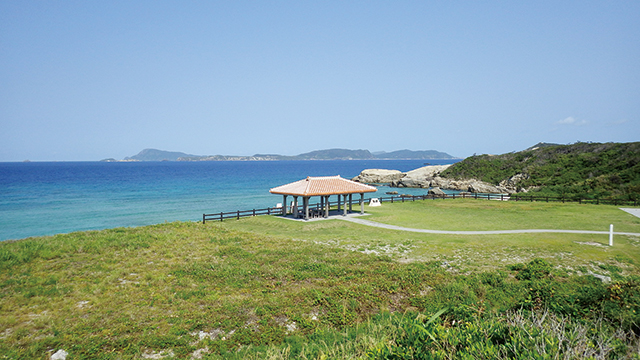
Aharen Cape Observatory
Observatory Tour
The islands of Kerama have observatories in various parts. From the observatory, visitors have a commanding view of island-dotted seascapes, sea cliffs, windswept vegetation, and other unique landscapes. During the winter months, some of the observatories attract visitors as an observation point for whale watching.
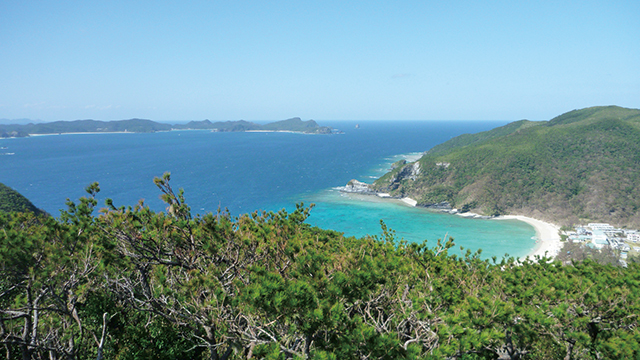
Teruyama Observatory
Nature Trails
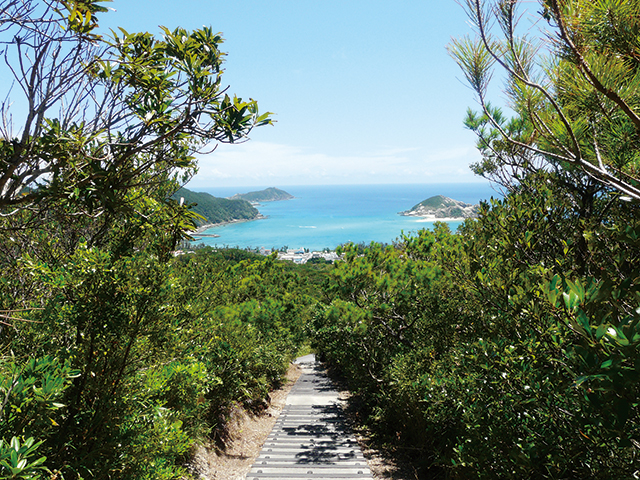
Teruyama Garden Trail
Nature Trails
The nature trails built throughout the islands exhibit distinct vegetation unique to the windy region of the Kerama Islands, living creatures such as Idea leuconoe, and magnificent landscapes created by a precipitous cliff of marine erosive features.
Rhododendron scabrum

Rhododendron scabrum
In summer, the trail welcomes migratory birds such as Ruddy Kingfisher and is ablaze with blooming Rhododendron scabrum in spring. It is an excellent site to encounter various types of living creatures from season to season.
Villages

Villages
From the old houses retaining traditional stone walls made of limestone, an alleyway lined with coral stone fences to the worship sites throughout the islands, visitors can experience the life of the remote Okinawan islands.
Sunset and Starry Sky

Sunset and Starry Sky
The sun sinking toward the horizon and the star covered sky are the beauty that can be experienced only on remote islands. The western observatory located at the National Okinawa Youth Friendship Center on Tokashiki-jima Island entertains visitors with night views of the Okinawa main Island.
